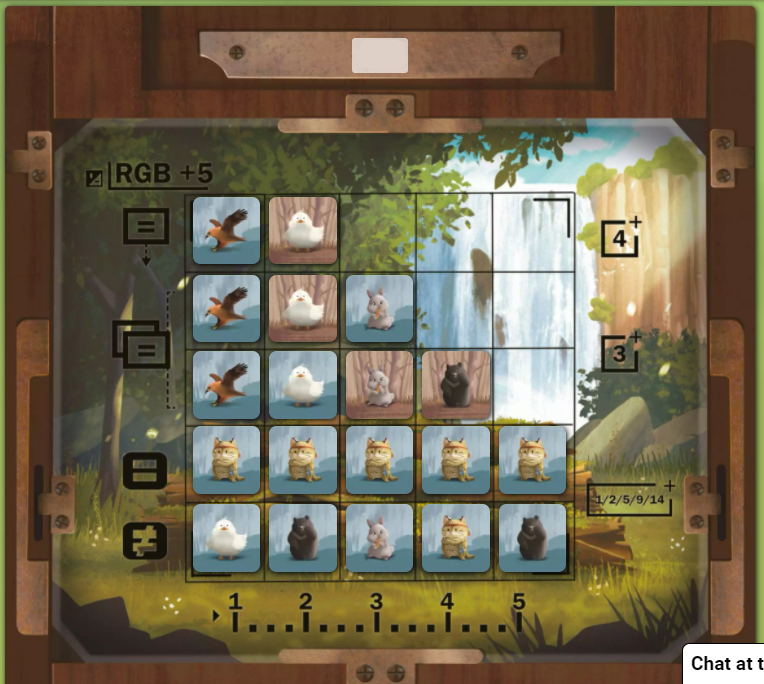|
20th February 2022 It's a Sunday and we're logged into Board Game Arena for some gaming fun. I don't know what Loco Momo means but I kind of hope it means crazy fun with cute animals. Hmm, that didn't sound right, how about wholesome crazy fun with animals. Loco Momo is actually about (I kid you not!) organising the disarrayed wildlife population of the forest for a group photo! Caveat: We've only ever played Loco Momo digitally. What's in a game?
It's good quality artwork though, a bright palette and bold cartoony style suit the game's light-hearted theme well. The game's only iconography appears on the player boards. It's not immediately apparent what they mean but quick read of the rules makes them clear. How's it play? Setup
On to play The objective of Loco Momo is for players to fill their boards with tiles to score VPs and the game provides various approaches to achieve this. Although this mostly involves collecting various kinds of sets. Loco Momo uses the traditional structure with the active player taking their 2 actions - a drafting action and placing action with play then moving to the player on the left.
Endgame Play continues until the 6th round is completed, then scoring occurs.
 The bottom row has 5 different animals, scoring 14. Row 2 above has 5 identical animals, also scoring 14. The matching eagles in the 1st column for rows 3 & 4 score 3, plus the eagle in the top row above scores an additional 4. The ducks in column 2 also score 7. The 2 rabbits in column 3, rows 3 & 4 score 3. The bear scores nothing. Finally, 2 rows have the same colour as does 1 column, scoring 15 more. Total score: 60. Overall
Loco Momo is a fairly straightforward game, the gameplay strategies are more or less obvious and there's not much to say about it. During drafting players will look for the optimal method to acquire the most tiles possible or, as will occur on occasion if there's little they want, try to avoid taking tiles. Then, when placing tiles, players may need to make some meaningful choices. Sure, it's easy putting down tiles when a player has got the ones they wanted but frequently, this won't be the case and dealing with those wayward tiles is very important. Players will want to keep scoring opportunities for other tiles/sets open and minimise the damage caused by having to place unwanted tiles. There's also a higher level of play that involves looking at what's available on the central board and what other players are working towards, then trying to anticipate what tiles they'll be looking to gain from themselves. It might be prudent to try and deny other players certain tiles. Or if they're not interested in tile of a particular colour, it might be safe take that tile in a later turn. This brings me to the one niggle I have about Loco Momo, which are the colour scoring rules. We've only played Loco Momo 3 player and because there are 3 colours of tile, we tend to gravitate towards one colour each with little 'stealing' of other players' colours. Which is understandable as completing columns/rows with the same colours confers nice bonuses and during the late-game completing sets scoring the colour instead of the animal gets more VPs. Consequently it also makes decisions 'easier'. I imagine with 4 players, this status quo would be shaken up and the game would become more interesting. Despite the criticism, the game ultimately generally does provide players with meaningful decisions to make. Games about about drafting sets of tiles and placing them on to a player board are pretty commonplace today. So does Loco Momo do anything to stand out from the crowd? I think the answer is... sort of. Loco Momo is a bit unremarkable but at the same time it's an enjoyably light, easily learnt and accessible example of this kind of game with a reasonable playing time. A good introduction or crossover game If this ticks your boxes, Loco Momo might be worth a look.
0 Comments
Leave a Reply. |
AuthorI play, I paint. Archives
March 2024
Categories
All
|





 RSS Feed
RSS Feed
